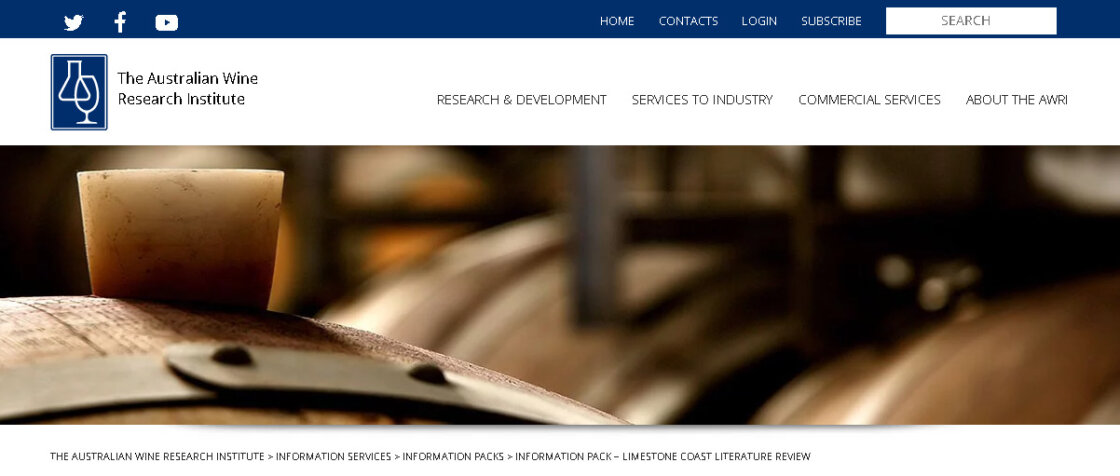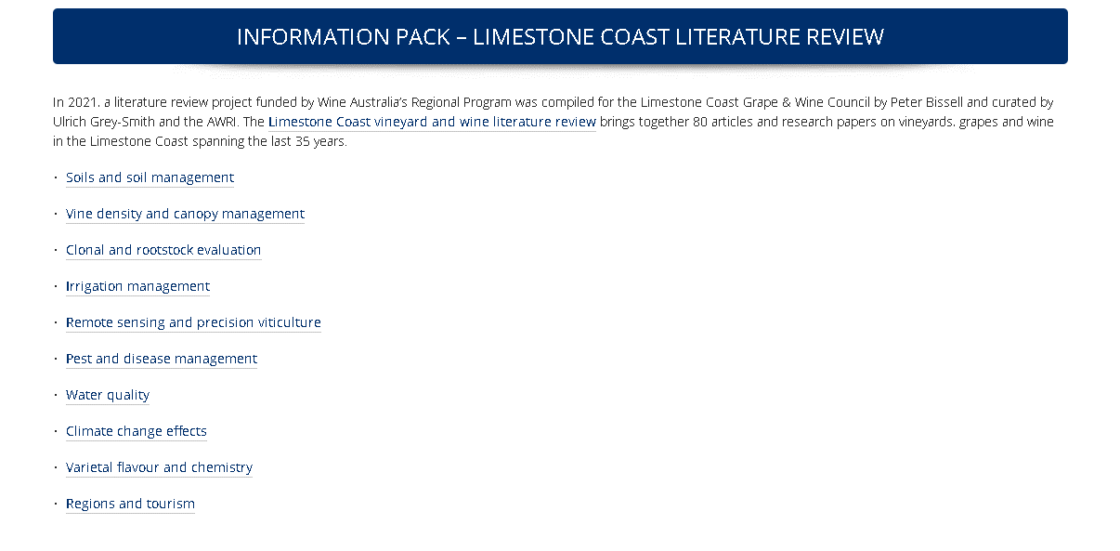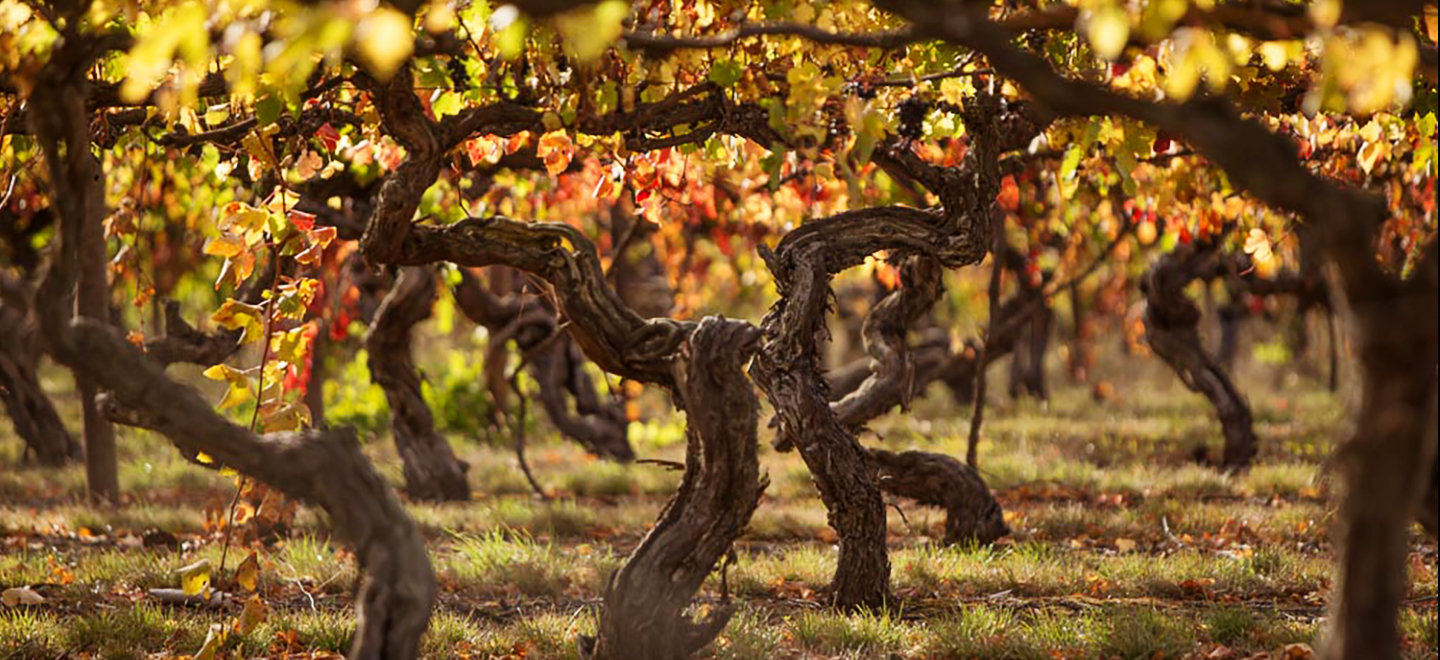Optimising water use efficiency for improved wine quality in Coonawarra Vineyards using remote sensing technologies Season 2
Dr Catherine Kidman1 Dr Vinay Pagay2, and Allen Jenkins1
1Wynns Coonawarra Estate, Memorial Drive, Coonawarra, South Australia
2The University of Adelaide, Waite Campus, Urrbrae, South Australia
FINAL REPORT SUBMITTED TO PIRSA & SENRM Board (MAY 2017) ON BEHALF OF
COONAWARRA GRAPE AND WINE INCORPORATED.
Executive Summary
The agricultural sector is the largest user of freshwater in Australia accounting for nearly 70% of
total consumption. Given the increasing demand for freshwater simultaneously with its scarcity,
and the need to continually improve wine quality for a competitive export market, a second
season of data collection was undertaken in the vintage of 2017 to assess remote sensing aerial
imagery as a tool to quantify vine water and nitrogen (N) status across the Coonawarra region.
In addition to the dataset collected last year, prototypes of plant-based non-contact infrared
sensors for water stress monitoring, known as thermography towers (TT), were tested over the
growing season in several vineyards across the region. Remote sensing was done using a manned
fixed wing aircraft equipped with thermal, multispectral and RGB (visible) cameras in two flights
across ~1500 ha of vineyards on 21st February and 25th March, 2017. Concurrent to each flight,
an intensive ground truthing survey that examined plant physiological indicators of vine water
status (stomatal conductance (gs) and midday stem water potential (Ψs or Ψmd)) and vine N status
(tissue N concentration) were performed across ~100 ha of vineyards for the two predominant
varieties, Cabernet Sauvignon and Shiraz.
Airborne remote sensing of vine water status across the region revealed moderately positive
correlations with gs, particularly during Flight 1 when the VPD was higher, suggesting that the
technique could be promising for measurement of water status for irrigation scheduling,
particularly under high VPD conditions above 2KPa which is quite typical during the irrigation
season in Coonawarra. The relationship between gs and these thermal water stress indices was
stronger for Shiraz than for Cabernet, possibly due to Shiraz being a relatively anisohydric
cultivar.
The TT derived thermal index (CWI) was moderately correlated with gs in both flights and was
more consistent for Cabernet than Shiraz. Positive CWI values generally indicate well water vines;
these values could be used with cultivar specific thresholds to schedule irrigation in the future—
however, more research on defining these thresholds for each cultivar is required. The initial
prototypes have revealed areas of improvement and optimisation of the sensors for increased
robustness and ability to access data from multiple platforms. The current systems only allows
manual data access but future designs could incorporate wireless data access through the Cloud.
Automated and continuous sensing of crop water status has the potential to increase yield, crop
water use efficiency, refine quality and decrease water and energy costs thereby increasing onfarm
profitability.
Vine N status was predicted quite well by several remote sensing indices tested in this trial
obtained from the multispectral camera. In particular, the index MCARI correlated well with
tissue N in both cultivars, while OSAVI correlated strongly with the proximally sensed chlorophyll
5
index as well as yield in Shiraz. In Shiraz, NDVI was a strong predictor of WUE; higher NDVI values
corresponded to lower WUE. These relationships may in the future allow growers to manage vine
productivity and vineyard WUE by tracking vegetation indices such as NDVI, MCARI, and OSAVI.
The aim of this funding was to evaluate the potential of aerial remote sensing and the new TT
technology for potential long term commercial applications for use within the grape growing
region of Coonawarra. However, the scope of this trial potentially extends into many other grape
growing regions within Australia, and indeed across other agricultural sectors. This project will
present for the Coonawarra community a timely, broad scale, and new innovative examination
of vine water use efficiencies, and novel irrigation system technologies. The aim is to
demonstrate to the community economically viable improved irrigation strategies based on real
time actual vine needs that lead to enhanced wine quality and lower irrigation volumes.
Furthermore, this project aligns with the vignerons vision to improving water use efficiency and
adapting to climate change.
To obtain your copy of this article, follow the library download prompts – click on BUTTON to start.
Article available at the AWRI Library
Each Article appears as Library Item here on this site with search-filters and a background on each.
- We house 39 of the 80 papers in our library, with PDF downloads available – free.
- The Australian Wine Research Institute have have 41 of the papers available via AWRI Information packs
- Third Party Websites that may have pay-walls.



